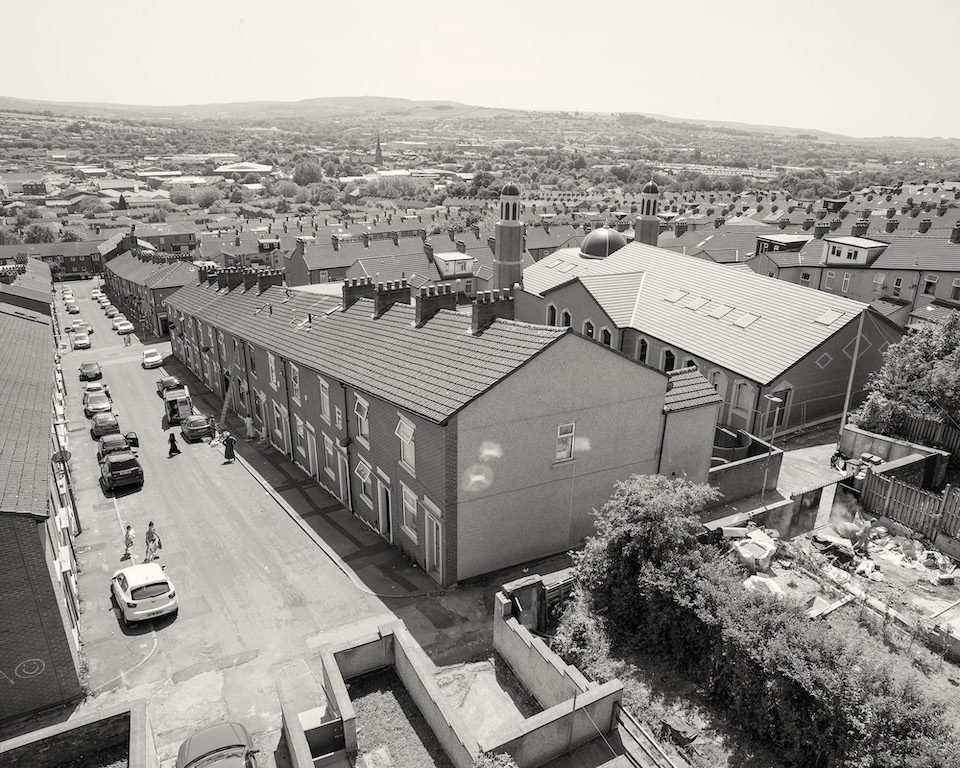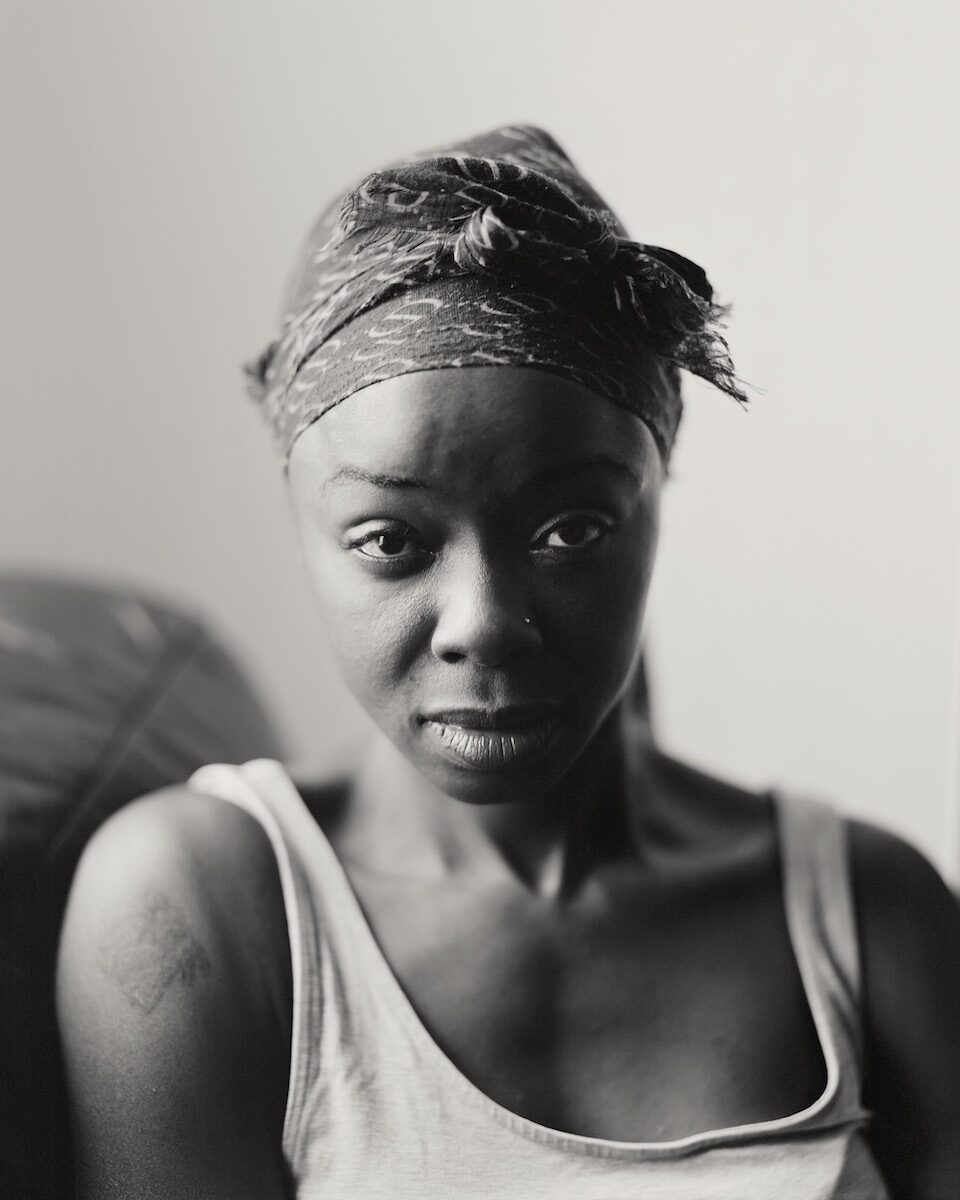Blackburn is an industrial town located in Lancashire, England. In the media, it’s been portrayed alongside words such as “segregation” and “integration”, with BBC’s Panorama once describing it as “the most segregated town in Britain.” Now, a new book of documentary images presents an alternative viewpoint – confronting the misrepresentation of Blackburn’s communities head-on. Photographer Craig Easton has been working in collaboration with residents of Bank Top: a small, tight-knit community in an area less than half a mile square. The resulting portraits present a nuanced picture of life in the town, pushing past stereotypes and making space for individuals to tell their own stories.
A: You have described this book as “a response, and a challenge, to the labelling of Blackburn by certain media documentaries and policymakers as ‘the most segregated town in Britain.’” What is your relationship to the town, and why did you want to push past these kinds of descriptions?
CE: I’ve worked extensively across the north of England – and in Blackburn in particular – for many years. I have seen at first-hand how communities are represented and misrepresented through simplistic narratives. I’m keenly aware of the power of the media and find this kind of jingoistic headline-grabbing language to be both dangerous and divisive. We hear constantly about “culture wars” and I wonder: who benefits from that kind of framing? What I see across Blackburn, and across the country, is not ethnic, cultural or religious groups at loggerheads with each other. What I see is people working together and striving in the face of challenging circumstances and economic hardship brought about by failed policy. The subsequent labelling of these issues as “culture wars” simply diverts attention away from the root causes of unemployment, social and housing crises. It results in a culture of victim blaming by trying to move the discourse towards issues of “segregation”.

A: The portraits were made within an area less than half a mile square. Why did you decide to work within such a small area – what’s the significance of the locale you chose?
CE: I like the idea that this tiny area is home to people from all over the world. It demonstrates very neatly that Bank Top is a place of congregation, not segregation – a place where people have come together to live in solidarity. It is a community that has grown up from many, many generations of “outsiders” moving in… originally from rural Lancashire, Scotland and Ireland during the industrial revolution, then later waves of people from Poland, then South Asia, then Eastern Europe and now, in a terrible irony, from places where people are fleeing wars fought with armaments made in Lancashire factories. It is all interconnected. The fact that all of this history can be seen within a few streets demonstrates that we have to look beyond simplistic narratives and recognise how the Bank Top community – and British society more broadly – is the product of our past: our colonial history, our industrial, foreign and social policies.
A: What was the experience of making the series like? Can you talk about some of the people you met along the way?
CE: It was a project that evolved over about 18 months and the pictures are a result of long conversations I was having with people in the community. Mostly, I spent my time hanging around in the street chatting, and people would dip in and out of the conversations. Sometimes I would ask if I could make a portrait and we’d do it there and then in the street, or we’d arrange to do it another time. Sometimes people asked me to make a portrait of them. I’d often meet people a number of times before I made a photograph. At the start of the project – pre-pandemic – I would visit people’s homes, but from March 2020 that wasn’t possible. Thereafter all the work was made in the street (or later in shops, the church or the mosque). By and large people were very generous with their time and understood that I had a genuine interest in hearing and learning about the community. I suppose I’d been around a while and was a familiar face.


A: Each black and white image was taken with a large format wooden field camera, as opposed to smaller digital alternatives. Why do you choose to work in this way?
CE: The reasons for that are many – in some sense it’s because I wanted to work slowly, to have time with people, to hear their stories. But I also wanted to be visible in the community; if I was going to challenge the idea that media oversimplifies things and presents only a superficial view, then I wanted people to know I was there to be seen. I was there for the long term, not just dipping in for a couple of days, making a few digital pictures to confirm a pre-conceived idea. I was there to be questioned and challenged as much as I was there to ask questions. I was very visible in the street with an enormous camera, tripod and boxes of film. It was very clearly an attempt to say: “I’m here to learn and to listen.” And then, of course, from a purely photographic or aesthetic perspective, I like working with that camera, in that way. You compose differently, think differently, interact with people differently, it’s a slow and deliberate way of working.
A: Visually, the portraits appear to be very natural – showing people outside their homes, at work or having conversations. What was your intention for the images?
CE: That’s very kind of you to say and I guess that is what I aim for: real pictures from real life. At heart I’m a documentary photographer, I am recording what I find as I find it. Although I’m working on a big old cumbersome camera, I’m not directing or staging the pictures in any way. I’m hopefully recording a truthful interpretation of the person, or the community, as I find them. I must say though, that I’m a great believer in the importance of documentary photography. If I can make work that people might look at in years to come as part of a visual record of our time, then I’ll be delighted; I’ll feel like I’ve achieved something to add to the canon of work that has so inspired me: from Lewis Hine to Dorothea Lange, from Paul Strand to LaToya Ruby Frazier and so many others who, over the last 180 years, have added to our visual history.

A: What do you hope readers take away from the book?
CE: It’s never really for us to say what readers will take away, but I hope that it offers people an opportunity to question some of the narratives we’ve talked about, including the notions of culture wars and segregation. The work is all about context, and so I hope it contributes – in some measure – to a broader debate about the kind of society we live in and how we are to thrive together.
A: What’s next for you? Are there plans to expand the project, or embark on a new one?
CE: Oh, I’ve always got multiple projects on the go… and yes, some of them expand on this work. Whilst my creative approach may change, the works still examine the same broad concerns. A few years ago, I ran a group project called SIXTEEN, inviting 16 photographers to work together for a common goal. It was a great success, and I’m toying with the idea of more large-scale collaborations. It all depends on funding of course, but as Bob Dylan said: “I’ve got a head full of ideas that are driving me insane.”
Bank Top is published by GOST Books. Find out more here.
Words: Eleanor Sutherland
Image Credits
1. Carol Imasiku, Bank Top, 2019 © Craig Easton
2. Overview of Bank Top neighbourhood with the new mosque being built amongst the sloped streets of traditional terraced housing. © Craig Easton
3. Carol Imasiku, Bank Top, 2019 © Craig Easton
4. Reverend Herrick Daniel, Bank Top, 2019 © Craig Easton
5. Youngsters emulate their heroes during the England vs Pakistan test series, Bank Top, 2020 © Craig Easton





